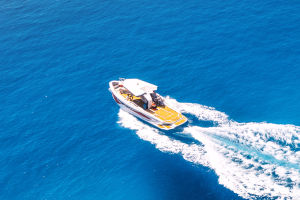Oil platforms are integral to modern oil extraction, serving as the primary facilities for extracting oil and natural gas from beneath the ocean's surface.
These platforms are typically constructed in offshore locations far from land, utilizing advanced technologies and equipment to ensure efficient and safe resource extraction.
The design and construction of oil platforms must adhere to stringent safety and durability standards to withstand various marine conditions. These platforms must be adaptable to different marine environments, with considerations for stability, weather, and the ability to handle large waves and strong currents.
Oil platforms can be categorized based on their design and operational functions into several types: fixed platforms, semi-submersible platforms, floating production storage and offloading vessels (FPSOs), and modular platforms.
Fixed platforms are generally constructed in shallow waters and are anchored to the seabed using steel piles or concrete structures. Their design is optimized for stability and resilience, allowing them to endure fluctuations in marine conditions.
Semi-submersible platforms, on the other hand, are designed for deeper waters and offer enhanced stability. Their main structure floats below the water's surface, anchored to the seabed with buoys and anchor chains, which enables them to withstand severe waves and winds.
Floating production storage and offloading vessels (FPSOs) integrate the functions of oil production, processing, and storage. These vessels are capable of extracting oil from deep waters, storing the produced oil, and transporting it to other locations.
Modular platforms consist of various modules, allowing for flexible adjustment of their functions and layouts based on operational needs.
The structural design of an oil platform comprises several critical components. The platform structure acts as the backbone, supporting the entire facility, and includes elements such as support piles, platform decks, and connecting components.
Support piles are typically embedded in the seabed, providing a stable foundation for the platform. Drilling facilities are used to bore oil wells into the seabed, encompassing drilling equipment, mud handling systems, and drilling pipelines.
Production facilities are responsible for extracting crude oil from the wells and performing preliminary processing. This includes separators, compressors, and heaters. Storage facilities are designated for storing the extracted oil or natural gas, typically involving large tanks on fixed platforms and oil tanks on FPSOs.
Additionally, platforms are equipped with living quarters to accommodate personnel, including dormitories, dining areas, medical rooms, and recreational facilities to ensure a good quality of life for the staff.
To handle potential emergencies, platforms are also fitted with safety systems such as fire alarms, emergency rescue equipment, and safe evacuation routes, along with emergency training and drill programs.
The primary function of an oil platform is to extract oil and natural gas from the ocean depths and transport them to land for further processing. Drilling operations utilize drilling facilities to create oil wells beneath the seabed, reaching oil deposits and facilitating extraction.
Production operations involve extracting crude oil from these wells, removing impurities through separation and processing facilities, and ensuring that the produced oil meets industry standards.
The extracted oil is then stored in designated storage facilities and transported to land or other destinations via pipelines, tankers, or other transportation methods.
In addition, platforms must conduct regular maintenance and repair tasks, including equipment inspections, safety training, environmental protection measures, and technological upgrades.
The operation and maintenance of oil platforms are crucial for ensuring their long-term stability and functionality. Routine equipment inspections are a vital part of maintenance, involving regular checks of drilling equipment, production facilities, and storage systems to identify and address potential issues.
Safety training is also essential, with staff required to undergo periodic safety drills and training sessions to enhance their readiness for emergencies.
Oil platforms are pivotal to modern oil production, and their design, functionality, and maintenance necessitate a high level of technological expertise.
Through advanced structural design and cutting-edge production technology, oil platforms not only efficiently extract and process oil resources but also ensure worker safety and environmental protection.
As technology progresses and demands evolve, oil platforms will continue to advance and improve, contributing to the global energy supply.


